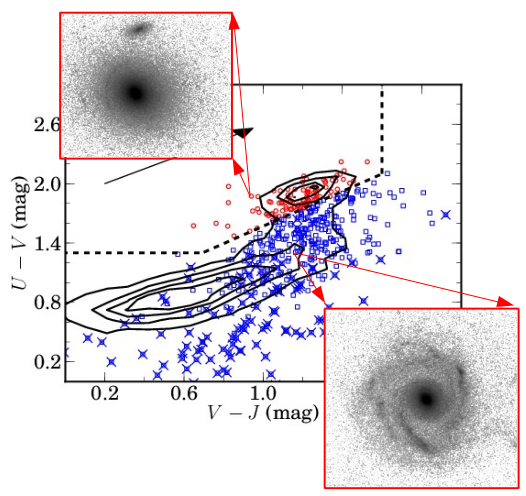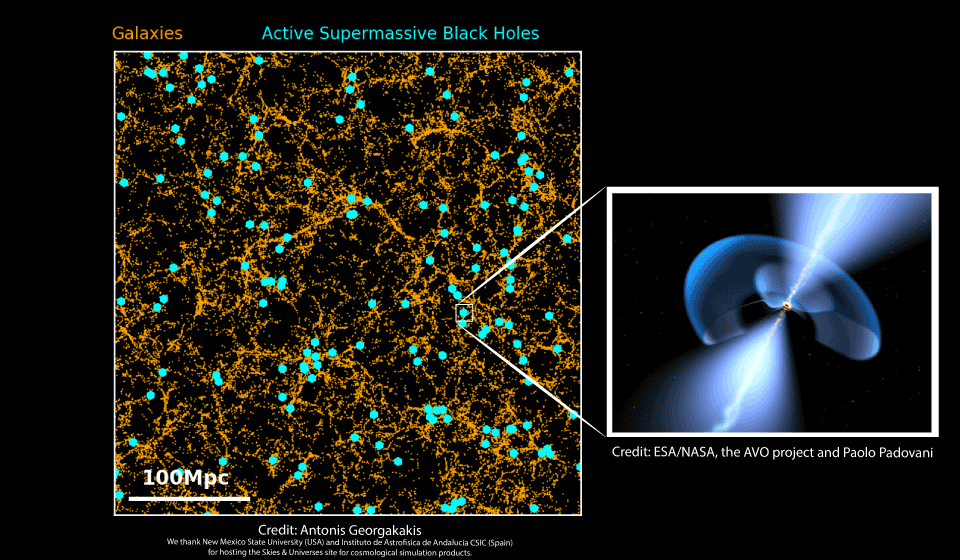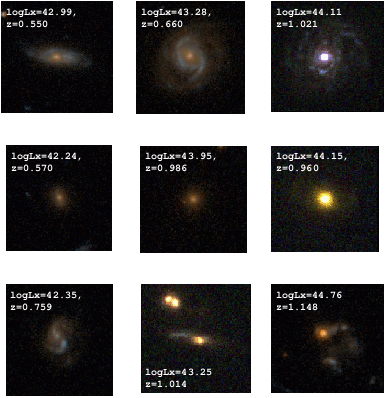The accretion history of the Universe
It is now well established that most if not all galaxies in the local Universe host large black holes at their nuclear regions with masses that may approach or even exceed 109 solar. It is thought that these monsters build-up their mass over cosmic time mainly via accretion of material from their immediate environments. Such accretion events can produce large amounts of radiation that are visible across the electromagnetic spectrum and are known as Active Galactic Nuclei. We are carrying out observational and modeling work to constrain the growth of supermassive black-holes as a function of time out to early epochs. Our analysis involves counting and accounting for Active Galactic Nuclei in the Universe (demographics) taking into account the impact of observational biases and selection effects.

Active Galactic Nuclei on the cosmic web
The distribution of Active Galactic Nuclei on the cosmic web provides information on the role of environment (local density) in the activation of supermassive black holes at the centres of galaxies. We are exploring how the fraction of Active Galactic Nuclei varies with environment, from rich clusters, to filaments and field to better understand AGN triggering mechanisms. We combine observations of both dense (clusters) and average (field) environments with well-tuned semi-empirical models to learn about the physical processes at play.
The physical conditions that favor accretion events onto supermassive black holes
Observations show that only a small fraction (~few percent at best) of the entire galaxy population at any given time show evidence for nuclear activity, i.e. they harbor an accreting supermassive black hole. For the vast majority of galaxies, their central black holes are dormant, i.e. they do not accrete material. In order to understand why that is we are studying the properties of galaxies that host an Active Nucleus (AGN), such as their star-formation history, gas content and morphology. These properties provide clues on the conditions that lead to the fueling of supermassive black holes, such as the importance of galaxy mergers or the availability of gas reservoirs in the galaxy.

X-ray variability
Flux variability is an intrinsic property of the accretion process onto a supermassive black hole. It provides information on both the physics of the accretion flow and the physical parameters of the system, such as the mass of the central compact object. Measurements of the flux variability of both individual AGN and populations are combined with appropriate modeling to get a handle on black hole masses and Eddington ratios. These key parameters can then be linked to properties of the AGN host galaxies to understand the mechanisms that trigger accretion events onto massive black holes.



